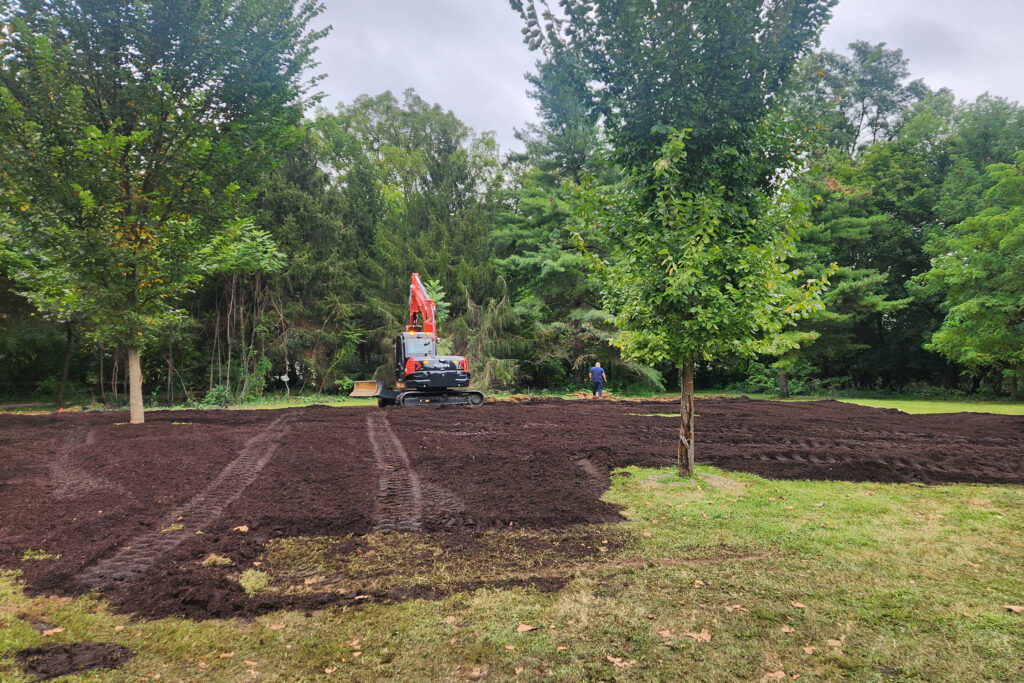By By Emilie Lounsberry,Naaja Flowers
Copyright insideclimatenews

PRINCETON, N.J.—For years, it’s been just a patch of grass in the middle of a small park. Soon the ground will be a botanical marvel of sorts, tilled and teeming with some 20 varieties of native trees and shrubs jammed together to trigger super-charged growth.
The microforest-to-be is part of an environmental trend inspired by the late Japanese botanist Akira Miyawaki, who discovered more than 50 years ago that, with proper soil preparation and a calculated mix of local plants, a clump of densely planted seedlings could grow quickly into lush compact woodlands.
Microforests may well help cities and towns in danger of becoming urban heat islands as temperatures rise because of climate change. Shade trees are known to cool neighborhoods. If they can be nurtured toward fast-tracked growth, their leafy protection may provide vital relief in warming states such as New Jersey, where days of extreme heat have been rising, according to data from the National Oceanic and Atmospheric Administration.
Heat Hub NJ, a state-run digital resource, notes that 2024 was the third warmest year in New Jersey since records began in 1895.
Microforests have taken a while to catch on, said Douglas Tallamy, an entomologist at the University of Delaware who is studying the concept. Europe has them, and Japan has more than 1,000, thanks to the Miyawaki influence there. Communities in the United States are now recognizing the potential.
“We’re the slow ones here,” said Tallamy, who believes people are starting to accept the realities of climate change and seek remedies like microforests. If done right, “you’re getting a functional ecosystem in just a few years,” he said.
The Princeton microforest, scheduled to be planted in early October, will join others that have popped up in California, Missouri, Michigan, Washington state, South Carolina, New York, Pennsylvania and Massachusetts. Princeton will be the third town in New Jersey to pursue the innovation.
Its tiny forest will measure about 5,000 square feet, but forests can be as small as 100 square feet or much larger. The largest Miyawaki forest is 470 acres in Gujarat, India.
Daniela Shebitz, chair of the Department of Environmental and Sustainability Services at Kean University in New Jersey, has been monitoring the growth of a microforest in the city of Elizabeth and said it has been remarkable to watch.
“Community-Based Conservation”
“It’s been unbelievable,” Shebitz said. “It’s something totally different to experience that growth and see how quickly these trees have shot up over my head.” She said microforests in Elizabeth—there are five—are growing about seven times more rapidly than traditionally planted seedlings, and other tiny forests have been estimated to have grown 10 times faster.
The idea behind the Miyawaki method is to plant a slew of local species that will grow to varying heights and to pack them in tight. The seedlings will compete with each other for sunlight and moisture, and in a survival-of-the-fittest kind of experience, grow at an accelerated pace. These botanical bursts create a forest in a few years rather than decades.
Shebitz said that people who take part in the plantings marvel as they see nature unfold swiftly and have “a little more hope” that they can help the environment.
Tallamy said a microforest can be started with as little as a few hundred dollars, a relatively economical way to help the environment as grants and federal funds are being cut by the Trump administration.
“Everybody wants to try to do something in their own neighborhood when the world is filled with so much despair,” Shebitz said. “This is something that every single community could do. It’s really the true definition of community-based conservation.”
Researchers believe tiny forests can help cut carbon emissions because trees absorb carbon from the atmosphere and their roots soak up stormwater.
Different Protocol
“The prep work is really quite intense for something of this size,” said Sharon Ainsworth, a master gardener who is part of the planning team and heads the seven-member Princeton Shade Tree Commission. Ainsworth said the most pressing challenge will be deciding how and where to plant. “It’s a very different protocol than we would normally think of in a landscape plan,” she said.
Here’s the plan: About six inches of compost is now being laid on top of the existing patch of land so a backhoe can dig and mix it together. The soil will rest for a few weeks before planting and mulching in early October.
And then everyone waits. “You just kind of sit back and watch,” Tallamy said. The grove will be weeded and watered by volunteers. The hope is that a tiny forest will be well established in about three years.
Some safeguards will be added including a sprinkler system to help with watering and a fence to keep out deer, which are a menace for young plantings. There also will be a path through the grove of seedlings. Reich said the project will cost about $40,000.
Reich said a local middle school has been designing signs to mark the new forest, and students from nearby Princeton University have been researching where another microforest could be planted. “I see it as a bit of a science project,” she said.
The hope is that other communities will be inspired to think big about small forests–or at least consider planting their own.
“It’s not going to end climate change, but it’s going to help,” Tallamy said.



